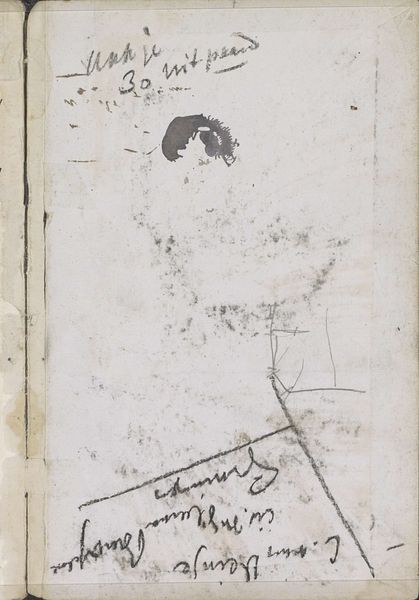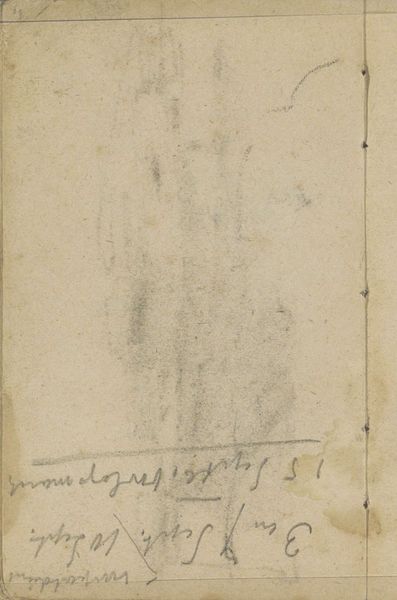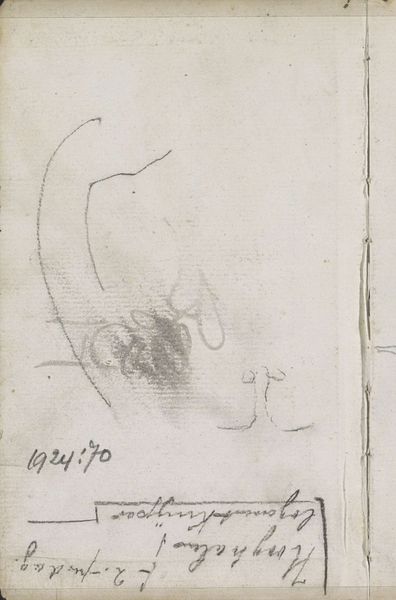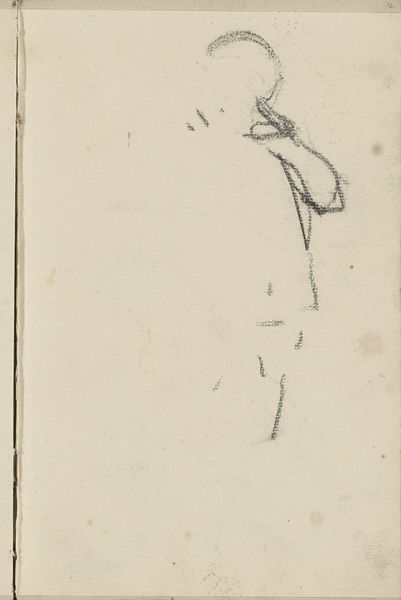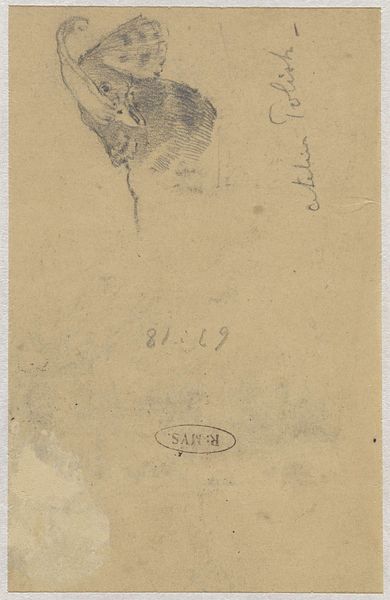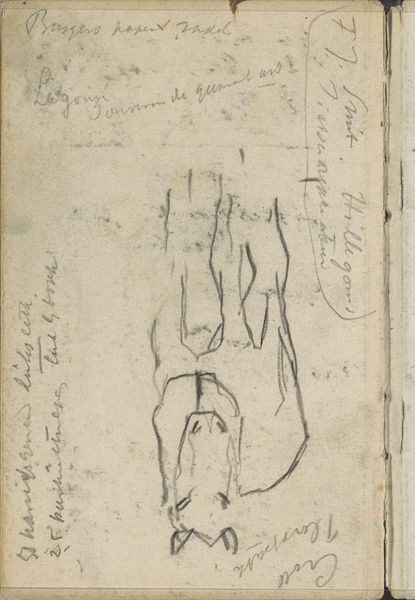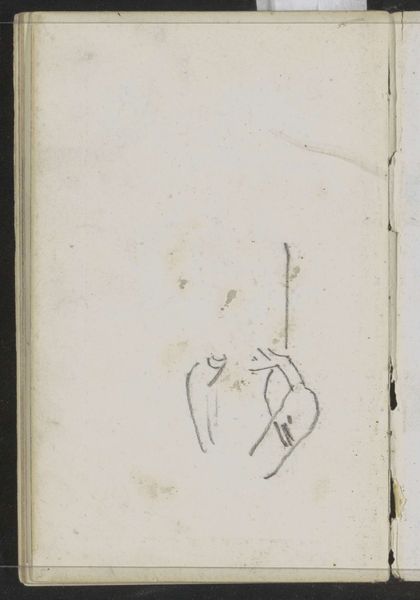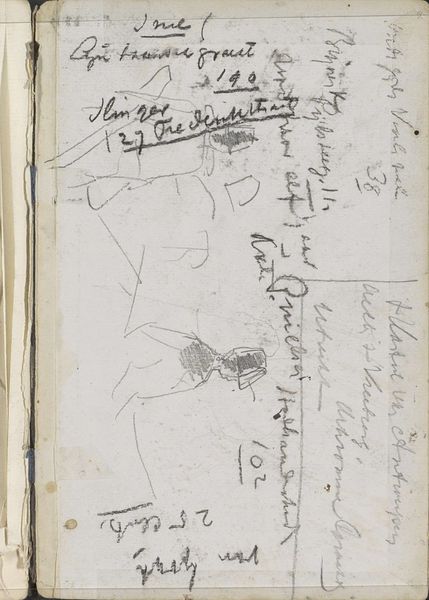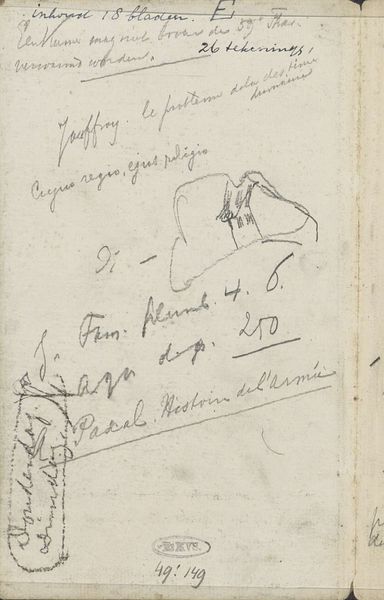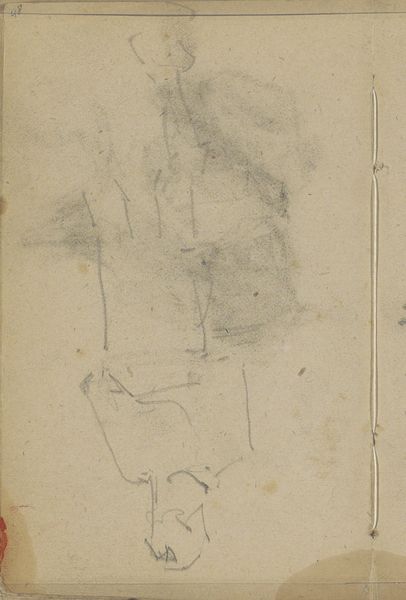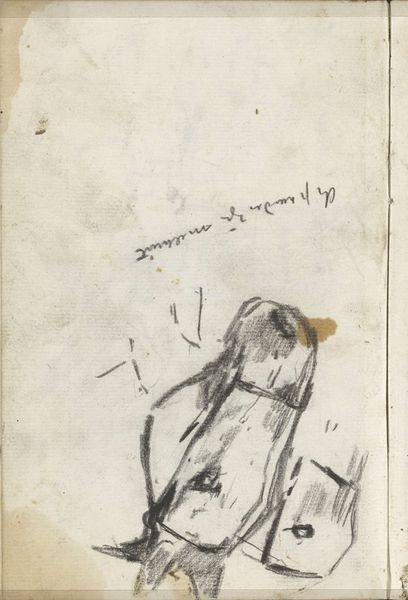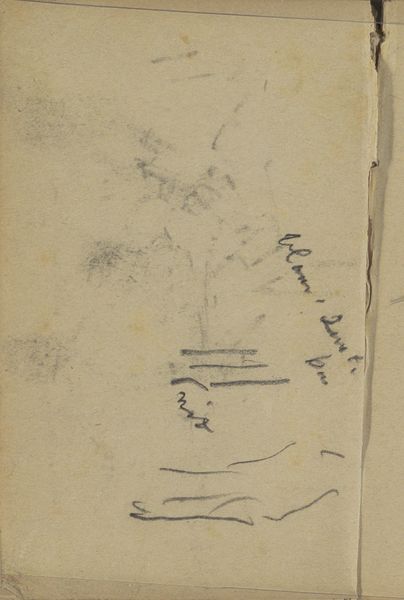
Copyright: Rijks Museum: Open Domain
Curator: Here we have George Hendrik Breitner's "Annotaties," created between 1893 and 1898, currently housed in the Rijksmuseum. It's a portrait executed in pencil on what appears to be a page torn from a sketchbook. Editor: It feels almost spectral. The lines are so faint, it gives the impression of a figure fading, perhaps a memory or an idea barely captured before it vanishes completely. Curator: Precisely. Note the economy of line, the almost casual way in which Breitner defines form. The visible scribbled text in the background competes with the human form and contributes to the overall impression of impermanence. Editor: I am fascinated by this "impermanence". What can you say about the person in the image? I wonder about the circumstances under which the person sat for Breitner. Were they known to each other, was it a paid assignment or something less formal? Did the artist aim to capture some semblance of their reality and spirit? Curator: Knowing Breitner's penchant for capturing the hustle and bustle of Amsterdam life, I suspect the sitter was just a face glimpsed amidst the urban landscape. The quick, gestural strokes suggest this was a study jotted down rapidly, a fleeting impression. The use of a humble medium contributes to its spontaneous quality. Editor: The sitter is cloaked and has their head covered which obscures gender; the rapidness almost certainly contributed to erasing an expression as well, thus adding an anonymity to their features and identity, which perhaps further hints at the lack of care or even lack of humanism imbued within such drawings. Curator: An interesting idea that such lack of finish lends itself to stripping human essence and reinforcing the urban alienation that modernity wrought onto its subjects. The use of such limited pencil and sketchbook materials could reinforce such disposability. Editor: It's a poignant testament to the human figure rendered with immediacy and also vulnerability. There is something intrinsically humane within the artistic process alone, given such a rendering, despite whether or not it strips the subject of certain identifiers and/or agencies. Curator: I agree, and while my reading leaned more towards formal construction, you rightly remind us of the importance of the humanism evident even through such a fragmentary depiction. Editor: Thank you! And for listeners to view such an old sketchbook work, one should equally remember that they too bring to it their own unique perspective to shape our modern day impressions!
Comments
No comments
Be the first to comment and join the conversation on the ultimate creative platform.
